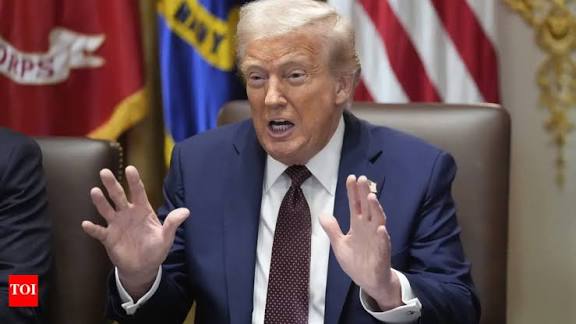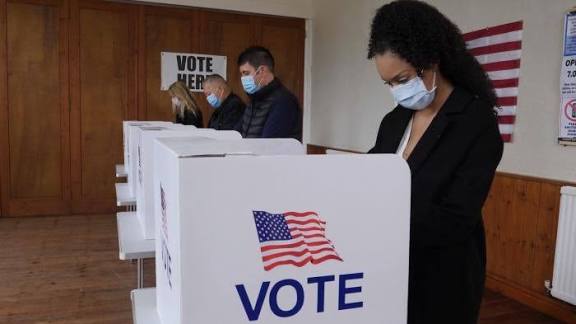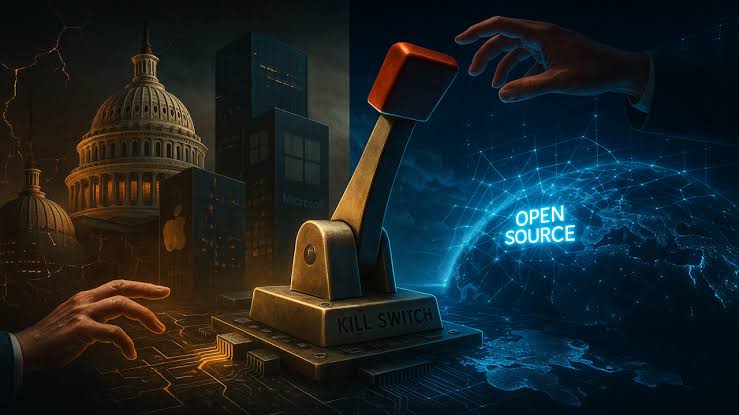Viral Trump AI Video Sparks National Outrage: Election 2025 in Trouble

Trump’s AI video sparks outrage – this is how the White House reacted. Today we will discuss about Viral Trump AI Video Sparks National Outrage: Election 2025 in Trouble
Viral Trump AI Video Sparks National Outrage: Election 2025 in Trouble
In a political climate already stretched to the breaking point, a new controversy has erupted nationwide: a shockingly realistic AI-generated video of former President Donald Trump targeting Democratic leaders Chuck Schumer and Hakeem Jeffries. The 35-second clip, posted across Trump-aligned social platforms, spread like wildfire before being removed—yet its impact continues to reverberate across the country.
This incident has triggered intense national debate and raised pressing concerns about the growing threat AI-manipulated media poses to democratic elections. As the U.S. heads deeper into the 2025 election cycle, many experts believe this moment could mark a turning point—one where synthetic media begins to redefine political reality.
The Deepfake That Sparked a Firestorm

The now-infamous video depicts Schumer and Jeffries in a staged conversation, but with heavily distorted, AI-altered faces and voices. Schumer appears to deliver a vulgar, racist rant, while Jeffries is portrayed in a humiliating caricature—complete with a sombrero, exaggerated facial hair, and mariachi music in the background.
The realism was what shocked viewers most. The AI rendering preserved key features of both men, making the deepfake instantly believable to large swaths of the audience. Despite its cartoonish tone, many viewers initially mistook it for authentic footage.
Within minutes, the clip spread across social media networks, accumulating millions of views. Outrage erupted immediately:
Hakeem Jeffries called the video “racist, disgusting, and fake,” demanding accountability.
Chuck Schumer criticized Trump for deliberately inflaming racial tensions and distracting from ongoing political negotiations.
Although the video was eventually removed, its cultural and political impact was already irreversible.
Why the Video Hit So Hard
Several factors combined to make this deepfake particularly explosive:
1. Hyper-Realistic AI Manipulation
This wasn’t a crude Photoshop job. The AI-generated facial movements, lip synchronization, and vocal mimicry were advanced enough to fool casual viewers.
2. Racially Charged Imagery
Jeffries’ portrayal was steeped in racist stereotypes, which amplified public backlash. Critics accused the creators of weaponizing racial caricature to humiliate political opponents.
3. Perfect Political Timing
The release came immediately after tense conversations between Trump, Schumer, and Jeffries regarding government funding negotiations. Many saw the timing as calculated, designed to shift narrative control and rile up Trump’s base.
4. Unfiltered Platform Distribution
Shared on platforms with minimal moderation—especially Truth-aligned networks—the video bypassed editorial scrutiny. By the time it was removed, it had already saturated political discussion across the nation.
National Outrage and Political Fallout
The backlash was swift and multi-layered.
Democratic Response
Democratic leaders condemned the video as an unprecedented attack on decency. Many argued that the widespread sharing of such synthetic content represented a dangerous escalation in political disinformation tactics.
Republican Reaction
Some conservative voices dismissed the outrage, characterizing the video as satire. Others defended Trump’s right to share “memetic political content,” even if AI-generated. A few attempted to reframe the debate as one about free speech.
Public Distrust Intensifies
Among average Americans, the incident fueled an already growing distrust of digital media. Many citizens expressed fear that they would no longer be able to distinguish truth from fabrication in political communication.
Media and Tech Expert Alarm
Journalists and AI researchers issued warnings about the normalization of “AI slopaganda”—synthetic political propaganda created for virality. Experts argued that deepfakes could quickly become a major destabilizing force in elections if not addressed.
Trump’s History of AI-Generated Content
The viral video is part of a larger pattern. Trump and his supporters have increasingly embraced AI-produced media as a communication tool.
Some examples include:
Self-glorifying deepfakes, portraying Trump as a superhero, king, or military commander
AI-manipulated political ads that exaggerate or distort the words of opponents
Conspiracy-themed AI videos, including futuristic health-care claims framed as official announcements
Unauthorized deepfakes used in scams, including incidents in which AI versions of Trump were used to defraud citizens in other countries
This repeated use of synthetic media has led analysts to conclude that AI has become a central part of modern political branding and persuasion.
Threats to Election 2025
The implications of this scandal reach far beyond partisan drama. As the 2025 election approaches, this incident highlights several critical vulnerabilities.
1. Collapse of Information Credibility
In a landscape flooded with deepfakes, voters may be unable to trust what they see. This destroys the foundation of informed decision-making and opens the door to manipulation on an unprecedented scale.
2. Lack of Clear Regulation
Although some states are introducing laws to restrict malicious deepfakes, national policy remains inconsistent. Courts are still grappling with whether regulating synthetic political content violates free speech protections.
Lawmakers face a delicate balancing act: protect public trust without infringing on constitutional rights.
3. Weakness of Deepfake Detection Tools
AI deepfake detectors are improving, but still far from reliable. Many fail when confronted with real-world, platform-modified political deepfakes. Meanwhile, deepfake creators rapidly adapt their techniques to bypass detection software.
4. Foreign and Domestic Disinformation Threats
Deepfakes are becoming powerful tools not only for domestic political actors, but also for foreign operatives seeking to disrupt U.S. elections. Synthetic videos can be deployed to sow confusion, inflame divisions, or provoke mistrust in election results.
5. Cultural Consequences
Beyond politics, the normalization of AI distortion raises profound cultural and ethical questions. If society becomes numb to the possibility of fabrication, truth itself becomes a negotiable concept.
Solutions: What Can Be Done?
The challenges are immense—but not insurmountable. Experts propose several responses:
1. Stronger Platform Oversight
Tech platforms can:
label AI-generated content
slow the virality of unverified videos
deploy rapid-response teams to counter synthetic media
But these changes require corporate willingness and public pressure.
2. Smarter Legislation
States and federal lawmakers may need to create consistent, enforceable rules that:
require transparency in political ads
criminalize malicious deepfake creation
ensure platforms cooperate during election cycles
The legal tightrope between regulation and free speech will remain a contentious issue.
3. Public Education
Digital literacy is now a civic necessity. Teaching citizens to question, verify, and analyze online content could dramatically reduce the impact of AI-driven misinformation.
4. Investment in Detection Technologies
Governments, universities, and tech companies are beginning to collaborate on more advanced detection systems. The goal is not perfect accuracy, but effective early-warning systems.
5. Ethical AI Frameworks
AI companies can adopt responsible-use guidelines, including:
watermarking AI content
discouraging political misuse
requiring transparency when AI is used in public communications
Such measures would create a more accountable AI ecosystem.
The Larger Meaning of This Moment
The viral Trump deepfake incident is much more than a fleeting controversy. It represents a pivotal moment in the intersection of politics, technology, and truth.
A New Era of Political Warfare
Generative AI can produce targeted propaganda faster, cheaper, and more convincingly than any prior technology.
Public Trust Is Under Attack
Without shared facts, democratic conversation becomes impossible. Deepfakes threaten to unravel that shared foundation.
Institutions Are Unprepared
Regulators, courts, and platforms remain behind the curve. Technology is evolving faster than society’s ability to govern it.
2025 May Be a Turning Point
This election cycle could determine how America confronts synthetic media—not only now, but in future generations.
Possible Future Paths
Experts outline several scenarios for the future:
Scenario 1: Regulated but Still Risky
Laws improve, platforms adjust, but deepfakes continue to evolve, keeping the threat alive.
Scenario 2: The Deepfake Wild West
Synthetic political media becomes ubiquitous. Public trust plummets.
Scenario 3: Public Fatigue and Desensitization
Voters start ignoring all video content, trusting only direct or verified communication.
Scenario 4: Tech-Driven Safety Net
Detection tools and media literacy combine to create a safer—but highly monitored—information environment.
Conclusion: Democracy at a Crossroads
The viral AI video involving Trump, Schumer, and Jeffries is more than an isolated scandal. It is a warning flare signaling the beginning of a new era—one in which political battles are fought not only with words and policies, but with algorithms, simulations, and synthetic realities.
How the nation responds will determine whether democracy adapts to the age of AI or is slowly overwhelmed by it.
How useful was this post?
Click on a star to rate it!
Average rating 0 / 5. Vote count: 0
No votes so far! Be the first to rate this post.
About the Author
usa5911.com
Administrator
Hi, I’m Gurdeep Singh, a professional content writer from India with over 3 years of experience in the field. I specialize in covering U.S. politics, delivering timely and engaging content tailored specifically for an American audience. Along with my dedicated team, we track and report on all the latest political trends, news, and in-depth analysis shaping the United States today. Our goal is to provide clear, factual, and compelling content that keeps readers informed and engaged with the ever-changing political landscape.




